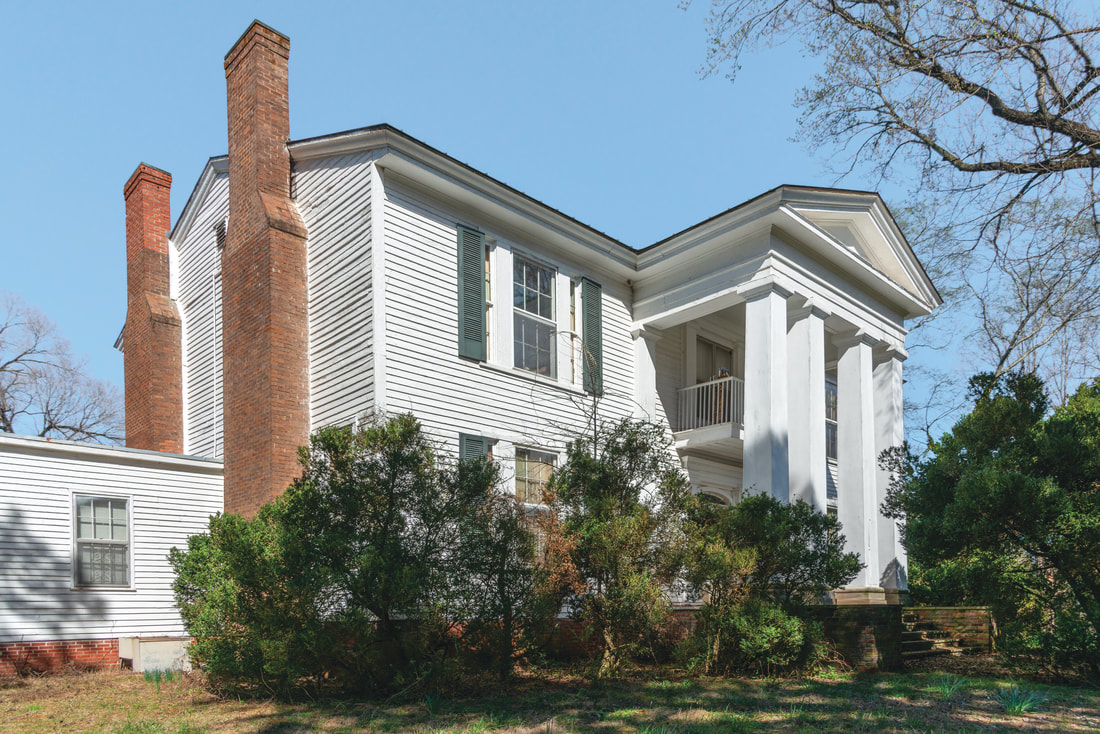The 115-acre property sits adjacent to an area facing high development. The current master plan for the area includes the Lanford House property in future development plans and extends the boundary of the development to Indian Creek. The plan shows a significant proposed street right-of-way to the west of the house that crosses over two historic barns on the property. Th e current owner is concerned about future development and how it might impact this historic property.
|
The William Lanford House was listed in the National Register of Historic Places in 1994 and is significant for its architectural style and the role it played in the early agricultural history of Madison County. William Lanford (1797–1881) moved to Madison County from Louisa County, Virginia, and established himself as a successful land speculator and planter. He had the home constructed in 1850. William married Charlotte F. Fennell in 1832, and the couple had three children before Charlotte died in 1840. After William and his three children moved to the property, they turned it into a thriving plantation. According to the US Federal Slave Schedules, Lanford owned enslaved people and had slave houses on the property. While none remain standing, the likelihood is high that vestiges survive in the form of archaeological remains. The home passed through the hands of several families until the present owner’s parents purchased it in 1973.
The 115-acre property sits adjacent to an area facing high development. The current master plan for the area includes the Lanford House property in future development plans and extends the boundary of the development to Indian Creek. The plan shows a significant proposed street right-of-way to the west of the house that crosses over two historic barns on the property. Th e current owner is concerned about future development and how it might impact this historic property.
1 Comment
Lillian Gregory
9/6/2023 09:01:10 am
Is there Indian heritage in your family?
Reply
Leave a Reply. |
Alabama's Endangered Historic LandmarksEach year since 1994, Alabama Heritage has highlighted threatened historic sites throughout Alabama. The “Places in Peril” list has identified more than 215 imperiled historic resources throughout the state, and is compiled by the Alabama Historical Commission and the Alabama Trust for Historic Preservation. The locations highlight the results of deferred maintenance, perceived obsolescence, development pressures, and lack of funding—forces that now more than ever threaten our cultural legacy. But awareness is a powerful force, too, and can cultivate a renewed determination to be responsible stewards of our heritage. For more information, visit the AHC or the ATHP websites. Alabama Heritage is proud to bring to you a selection of the places designated as perilous. Please keep your comments to information relevant to the featured place in peril. Alabama Heritage reserves the right to delete any comment that we deem inappropriate. Archives
May 2024
|


 RSS Feed
RSS Feed